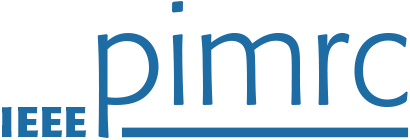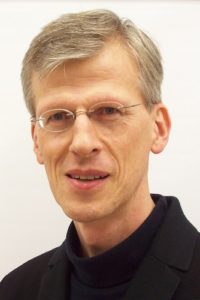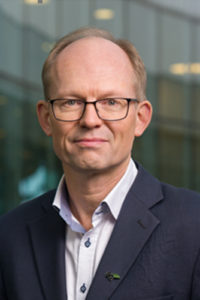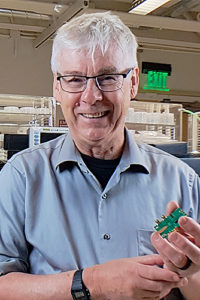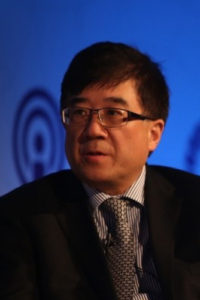Recorded PIMRC keynotes will be published on the event website shortly after the live sessions have concluded.
Keynote 1: The road to 6G and what 5G still has in store
Tuesday 14 September, 14:30-15:30 (UTC/GMT +3)
Session Chair:
Matti Latva-aho, University of Oulu, Finland
Abstract
Our new norm of working from home expediated not only the need for high-quality video conferencing, but also for increased levels of digital automation in many parts of the industry and society. This will accelerate innovations in the 5G Era already in the second half of the decade. While we reflect about the vision and goals for 6G in research, it is important to take into account the transformation of our industry and emergence of new platform technologies in 5G. They are guide posts and stepping stones for new 6G technologies that will enable existing and new applications at scale.
Dr. Peter Vetter
President of Bell Labs Core Research, Nokia
Dr. Peter Vetter is President of Bell Labs Core Research and Bell Labs Fellow. He leads an eminent global research organization with the mission to create game changing innovations that define the future of networks and insure portfolio leadership for Nokia’s core business.
During an international career of more than twenty-five years in research leadership mostly in fixed and mobile networks, he and his teams have realized several world-first system demonstrations and successfully transferred industry leading concepts to the business groups. He was also co-founder of an internal venture that produced the first FTTH product in Alcatel.
He received the degree of Physics Engineer from Gent University (Belgium) in 1986 and a PhD with Prof. H. Pauwels in 1991. After a post-doctoral fellowship with Prof. T. Uchida at Tohoku University (Japan), he joined the research center of Alcatel (now Nokia) in Antwerp in 1993. Since 2009, he has worked at Bell Labs in Murray Hill, New Jersey, and has been on the senior leadership team of Bell Labs since 2013. He has authored over a hundred international papers and presented keynotes and tutorials at major technical industry events.
Keynote 2: 6G in a world of communicating intelligent machines
Tuesday 14 September, 15:30-16:30 (UTC/GMT +3)
Session Chair:
Markku Juntti, University of Oulu, Finland
Abstract
Today’s networks have formed an intelligent digital infrastructure offering endless possibilities to individuals, enterprises, and governments worldwide. The smartphone has become our primary internet device, and with the rollout of 5G the network platform will enable robust new solutions to a wide range of social, environmental, and economic challenges. Still, we are only at the beginning towards a next paradigm shift formed by a combination of emerging technology trends. That paradigm shift will take us to the 6G era.
Our vision is that 6G will enable a cyber-physical continuum blending the physical real world of sensing, action and experience with a programmable digital representation of that same world. We will be able to experience human sensory experiences conveyed digitally over distances, as “if we were there” physically. Intelligent machines (or AIs) will cooperate and interact in the digital world over real-world connections. The 6G network platform will provide intelligence and full synchronization in this cyber-physical continuum, enabled by limitless connectivity, network compute fabric, trustworthy systems and cognitive networks .
This talk will expand on our 6G vision, with specific focus on the aspect of communication between intelligent machines. Real-time machine communication is developing quickly, heading towards AI embedded machines everywhere, and AI-to-AI communication may very well dominate the traffic of future networks.
Dr. Magnus Frodigh
Vice President and Head of Ericsson Research, Ericsson
Dr. Magnus Frodigh has been Vice President and Head of Ericsson Research since 2018.
Dr. Frodigh was Research Area Director for Network Architecture and Protocols at Ericsson Research from 2007 to 2018 with responsibility for driving long-term technology leadership research in the areas of network architecture and protocols comprising radio, transport and core networks, including network management.
Dr. Frodigh joined Ericsson in 1994 and has since held various key senior positions within Research & Development and Product Management, focusing on 2G, 3G, 4G and 5G technologies, and expanding collaborations between with both academia and industries. He holds 29 patents.
Dr. Frodigh was born in Stockholm, Sweden, in 1964. He holds a Master of Science degree from Linköping University of Technology, Sweden and earned his Ph.D. in Radio Communication Systems from Royal Institute of Technology in Stockholm, Sweden.
Dr. Frodigh is adjunct Professor at Royal Institute of Technology in Wireless Infrastructures since 2013.
Keynote 3: 100-300GHz Wireless Communications: IC and System Design
Wednesday 15 September, 17:00-18:00 (UTC/GMT +3)
Session Chair:
Aarno Pärssinen, University of Oulu, Finland
Abstract
100-300GHz wireless systems can provide very high data rates per signal beam, and, given the short wavelengths, even compact arrays can contain many elements, permitting massive spatial multiplexing for further increased capacity. We will describe ICs, modules, and system design of 140GHz massive MIMO wireless hubs and 210/280GHz MIMO backhaul links.
Prof. Mark Rodwell
University of California, Santa Barbara
Mark Rodwell holds the Doluca Family Endowed Chair in Electrical and Computer Engineering at UCSB and directs the SRC/DARPA ComSenTer Wireless Research Center. His research group develops high-frequency transistors, ICs and communications systems. He and his collaborators received the 2010 IEEE Sarnoff Award, the 2012 Marconi Prize Paper Award, the 1997 IEEE Microwave Prize, the 2009 IEEE IPRM Conference Award, and the 1998 European Microwave Conference Microwave Prize.
Keynote 4: Integrated Sensing and Communications
Thursday 16 September, 14:30-15:30 (UTC/GMT +3)
Session Chair:
Ari Pouttu, University of Oulu, Finland
Abstract
In this talk, we present a framework of integrated sensing and communications for 6G. The true integration of the communions and sensing into a single device a, single spectrum and single platform will enable many new value added services, beyond the connectivity function as we know for wireless communications today. Furthermore, for 6G, the higher frequency spectrum with larger bandwidth has been utilized to meet the continuously increasing requirement for larger throughput requirement, in addition to transfer the information bit, we can retrieve the radio wave propagation characteristics with advanced signal processing technologies, to perform the parametrize-identification of the objects, the environmental real time imaging and even spectrogram of the physical world, this will facilitate the proliferation of the deep learning technology for 6G and to provide for the 6G AI service platform. The integrated wireless sensing and communications (ISAC) has the advantages such as preserve the privacy and enable the dynamic real world learning and inferencing service and ultimately the ISAC will make the entire global wireless communications infrastructure and billions of devices as a network of sensors.
Dr. Wen Tong
CTO, Wireless Network, Huawei Technologies Co., Ltd.
Dr. Wen Tong is the CTO, Huawei Wireless. He is the head of Huawei wireless research. In 2011, Dr. Tong was appointed the Head of Communications Technologies Labs of Huawei, currently, he is the Huawei 5G chief scientist and led Huawei’s 10-year-long 5G wireless technologies research and development.
Prior to joining Huawei in 2009, Dr. Tong was the Nortel Fellow and head of the Network Technology Labs at Nortel. He joined the Wireless Technology Labs at Bell Northern Research in 1995 in Canada.
Dr. Tong is the industry recognized leader in invention of advanced wireless technologies, Dr. Tong was elected as a Huawei Fellow and an IEEE Fellow. He was the recipient of IEEE Communications Society Industry Innovation Award in 2014, and IEEE Communications Society Distinguished Industry Leader Award for “pioneering technical contributions and leadership in the mobile communications industry and innovation in 5G mobile communications technology” in 2018. He is also the recipient of R.A. Fessenden Medal. For the past three decades, he had pioneered fundamental technologies from 1G to 5G wireless and Wi-Fi with more than 500 awarded US patents.
Dr. Tong is a Fellow of Canadian Academy of Engineering, and he serves as Board of Director of Wi-Fi Alliance.
